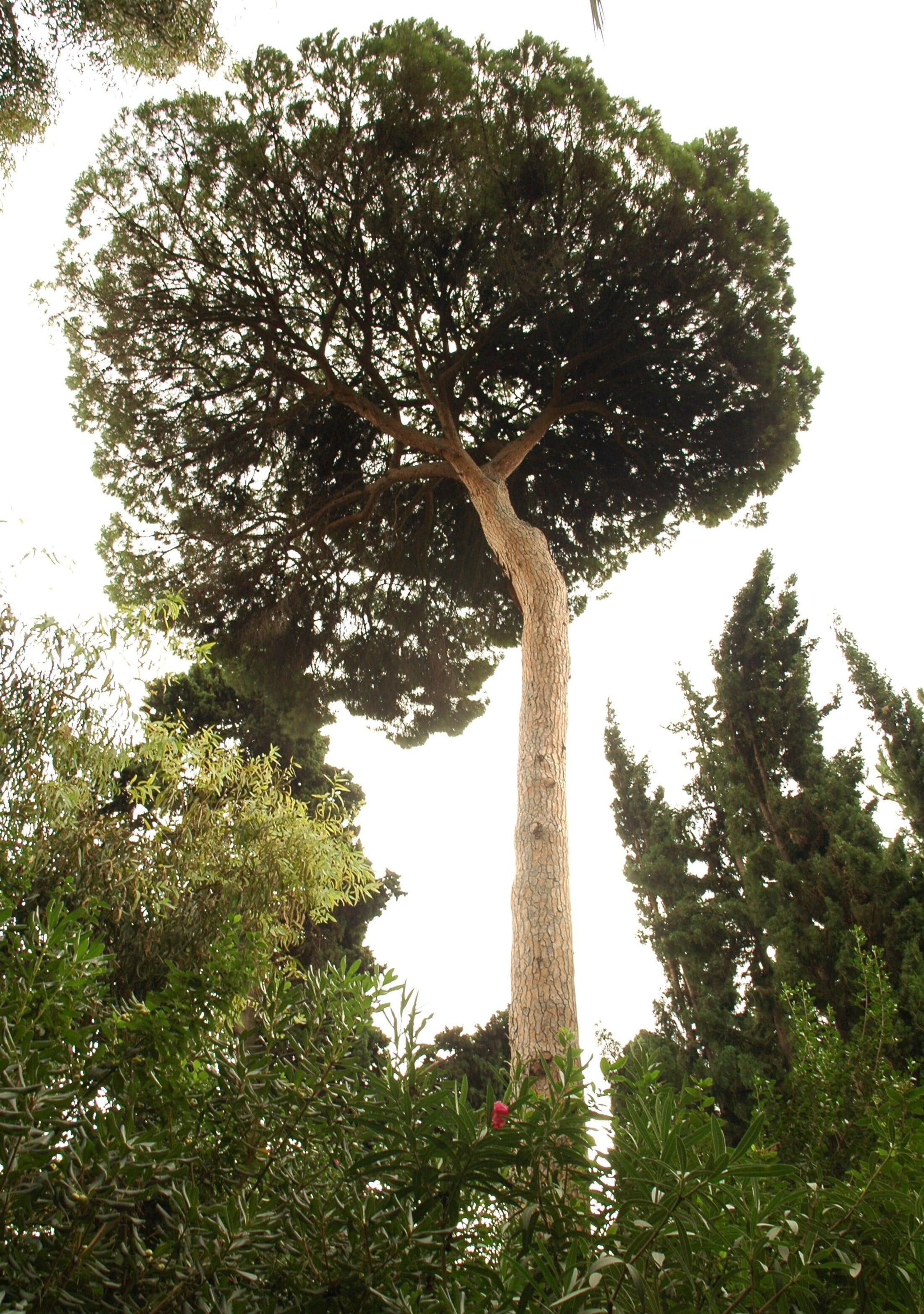The umbrella pine
Known scientifically as Pinus pinea, this tree is native to the Mediterranean Basin, a sandy coastal area stretching from Portugal to Syria. As a result of having to adapt to life among shifting dunes which partially cover it, the tree has developed a characteristic straight trunk and parasol-shaped crown. The largest example in the garden stands near the Nymph's water jump and is almost 3 metres in perimeter.
The tree's decorative appearance has made it a common feature in landscape gardening, while eagles, vultures and storks nest in the tops of the larger specimens. Though its heavy, knotted wood makes it difficult to work, in days gone by it was frequently used to make railway sleepers and in construction. It is also a good source of fuel, since it burns quickly and gives off an intense heat. Its leaves are rich in vitamin C and are believed by traditional medicine to have expectorant and antiseptic properties. Its fruit is popular in cooking, though the difficulty involved in cleaning and harvesting the pine nuts, a process which takes place in winter, makes them expensive.
Interesting fact: umbrella pine wood is used to secure coastal slopes and dunes.

